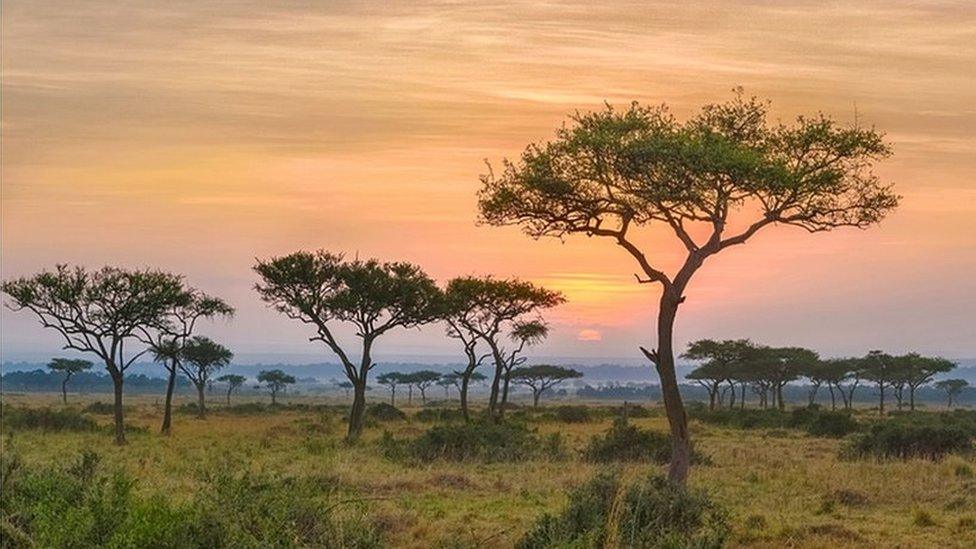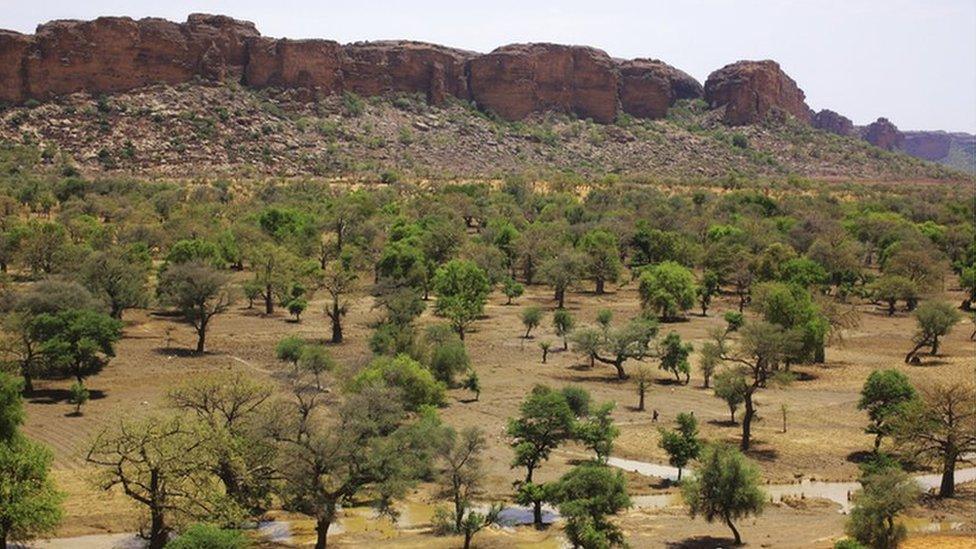Climate change: Nasa helps scientists map 10 billion trees
- Published
- comments

For the first time, scientists have mapped almost 10 billion individual trees in Africa.
The international team, including experts from Nasa, used satellite images and artificial intelligence in order to estimate how much carbon is being stored in parts of the continent.
They found there were far more trees spread across some parts of Africa than previously thought, but that less carbon is locked up than has been predicted.
The team hopes the technology used could help improve the monitoring of deforestation across the world.
What did scientists find?

Researchers from the University of Copenhagen in Denmark worked with scientists from Nasa to look at 300,000 ultra-high-resolution satellite images of Africa's drylands.
The pictures were pieced together in a mosaic that showed the number of trees from above.
They were then able to map the locations of 9.9 billion individual trees across Africa's Sahel region - which is located below the Sahara Desert and north of the equator.
Using artificial intelligence, they then trained one of Nasa's supercomputers to identify individual tree species due to their distinctive features such as flat crowns of acacia trees.
This then gave the team the ability to work out an estimate of their carbon stocks.

The results showed that these trees currently store 840,000,000 tonnes of carbon - less than was previously thought.
Having an accurate tree carbon estimate is important for predicting the impact of climate change - which is affected by how long trees and other vegetation store carbon.
However there was good news too as experts found more trees spread across these parts than expected.
By mapping the trees individually, scientists hope to create more accurate climate models which will allow them to predict what to expect in the future.
